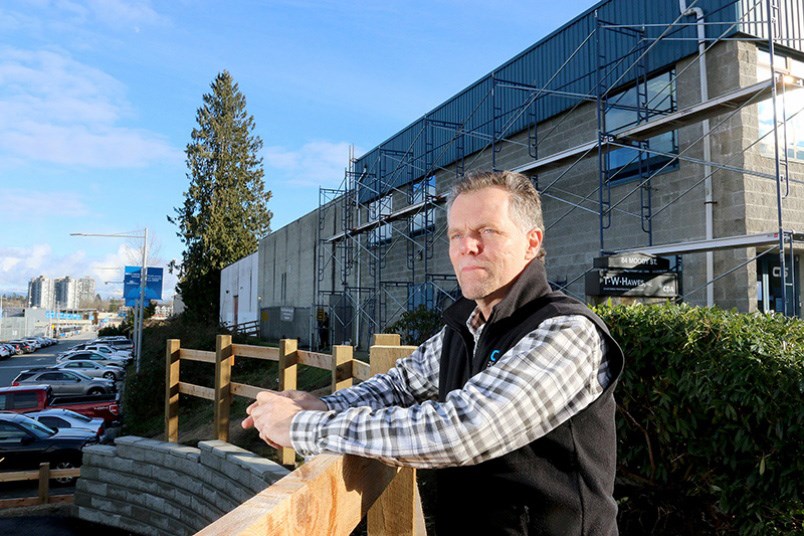The Mayor of Port Moody says the move of a prominent traffic engineering firm from its office in Moody Centre to a new location in Port Coquitlam is the inevitable result of poor planning decisions made in the past.
Rob Vagramov said skyrocketing rent increases and the resulting vacant buildings in Port Moody’s downtown adjacent to the SkyTrain station are the consequence of pursuing densification without consideration for job creation in the area.
“Other cities would give an arm and a leg to have what Port Moody has in Moody Centre,” Vagramov said, citing access to SkyTrain, fibre-optic cable, parks and a nearby entertainment district. “It’s the makings of a solid jobs precinct that could last generations.”
But Jan Voss said the 25 jobs at his traffic engineering company, Creative Transportation Solutions Ltd., won’t be part of the mayor’s vision, or whatever gets built in the area, as a consortium of developers and property owners formally puts forth its plan to create a dense urban neighbourhood with more than 4,000 homes, as well as commercial and retail spaces that could generate jobs for 2,000 people.
Voss announced on social media he’s moved his firm from a building at the corner of Spring and Moody streets that it’s leased for 15 years. He previously found space in Port Coquitlam to store its fleet of vehicles.
Voss said the search for at least 4,000 sq. ft. of office space in Port Moody proved fruitless after the owners of the building his firm currently occupies advised him they wouldn’t renew his tenancy as they await redevelopment to begin.
“We are certainly not the first business in Port Moody to encounter this challenge,” said Voss, who started his company in the basement of his home, just a short walk away.
Vagramov said well-paying jobs, such as in high-tech, need to be at the forefront of any redevelopment of the 20 acres of commercial and light industrial properties adjacent to the Moody Centre SkyTrain station.
“The rebuilding of Moody Centre has the potential to usher in a lasting economic engine for generations to come,” he said.
But representatives of the consortium, that includes prominent developers like Beedie Living, Anthem and Woodbridge Homes, as well as property owners like TransLink along with several private families, said that engine requires the constant fuelling that comes from residents living in close proximity.
Their plan, outlined in a formal application to amend Port Moody’s official community plan for the neighbourhood, envisions a pedestrian- and cycling-oriented spine along Spring Street, between Moody Street and Electronic Avenue, where shops and offices will occupy the podiums of a series of condo towers up to 36 storeys. Interspersed will be pocket parks, a large transit plaza that will function as a community gathering space, and a newly-daylighted Slaughterhouse Creek. They suggest their master-planned community could be an ideal landing spot for a satellite campus of a post-secondary institution.
Katie Maslechko, the senior development manager for Beedie Living said people want more job opportunities and places to live nearby.
But Vagramov said the developers have to get the message that jobs are Port Moody’s top priority for the neighbourhood as adding thousands of additional residents would add even more pressure to the city’s parks and roads, forever relegating it “to being an expensive, overtaxed bedroom community.”
Meanwhile, Voss said the exodus of existing jobs from the city will only likely continue.
“We will certainly not be the last.”



